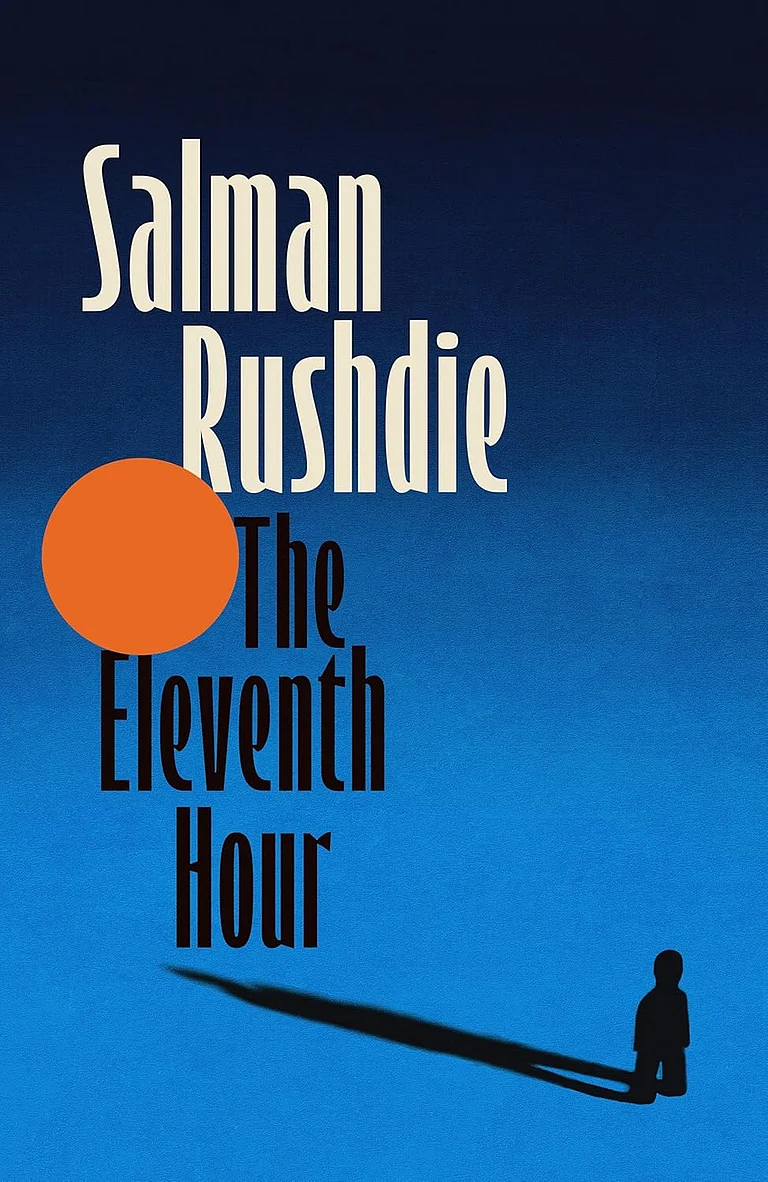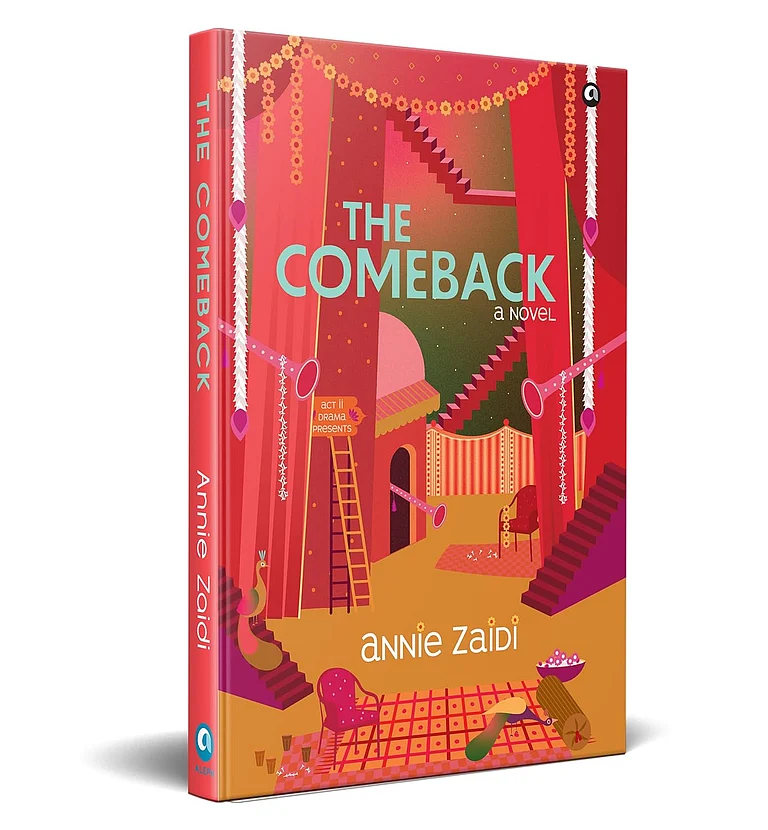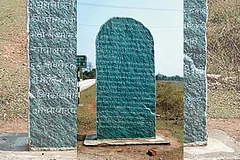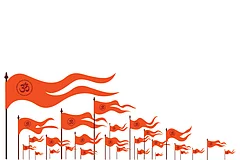Brahma Prakash’s Body on the Barricades: Life, Art and Resistance in Contemporary India is an astonishing book. The author turns the Covid-19 pandemic and its consequences into a powerful conceptual apparatus and a metaphor to examine the human condition of contemporary India in its entirety, covering almost all aspects of life (and death). Breathlessness, curtailment, confinement, disease, freedom, movement and desire do not remain mere keywords, but modes in which politics and life are experienced in a polity that is at a tipping point. There are now numerous texts available that document and analyse the pandemic—Prakash’s work does all that, but it does so by telling and showing us what it meant to live and die and what people do and feel between that finite period, both individually and collectively. He creates a remarkable assemblage of sources to drive home his argument. The book is replete with references to folk performances, poetry, political philosophy, literary theory and a range of academic literature. But it is the autobiographical anecdotes, almost in the manner of what anthropologists call autoethnography, that give this work a sense of a shared life to the attentive and empathetic reader. This is a consequence of, I think, what the more endearing and interesting aspect of the book is.
Body on the Barricades is a composition of political lyricism in the form of essays. When Bertolt Brecht asked and answered the question about singing and dark times, he deferred the question of the form that songs could take in dark times. The way Prakash composes his essays, imbued with a certain poetic sensibility and the use of language, indeed make them songs which could only be rendered in prose in dark times. The dark times that he sings about are the political and social life of contemporary India. The essay form gives Prakash the freedom, which he invokes so evocatively throughout the text, to think through, critique, and most importantly, think about possibilities of a workable utopia, sometimes wistfully and at other times, concretely optimistically. He uses the full scope of the essay form which, according to Theodor Adorno, “eludes official thought” and “polarizes the opaque element and releases the latent forces”. Prakash does not simply resurrect the essay form (which is a feat in itself), long buried under the debris of almost mechanical academic and journalistic writing that has been imposed by the machinery of publication on the public intellectual. He makes brilliant innovations in the essay form.
The best way to read the 10 essays and the prologue and the epilogue, I think, is to think of them as embroidery, more specifically as a sujni. Sujni is made in Bihar and adjoining states by using old and used clothes patched and weaved together intricately into patterns that may narrate a story or may simply be abstract shapes. Prakash, by his own admission, is doing something similar. He uses multiple sources scattered in multiple formats and weaves a tale of our times. These essays do have a key theme, but like the different coloured threads that are used to make a sujni, the essays bring together the sources to create a unique pattern. This too is what makes these essays different from the classical essay form. There is a fair bit of intertextuality at play in these essays and more than once I was reminded of one or another work that has striking resemblance to the argument being made in the essays.
The prologue begins with the image of the Covid-infected author with an oximeter attached to the finger and a thermometer on the tongue. An image that is striking, familiar and filled with dread. He uses this capture of the body by the external technological apparatus of measurement and control throughout the book. It works as a metaphor of a lifeless and life-denying state apparatus always ready to constrain the body. It is this conflict that is at the heart of Prakash’s concern, which he goes on to explore in the next eight essays.
The first essay takes the leitmotif of breathlessness to think about the many ways in which curtailment occurs during the pandemic and in the condition of democracies in decline, especially when the former gets embedded in the latter. Breathlessness is the symptom of both the diseased body and the inflicted polity. This is nowhere clearer than the George Floyd murder and Covid-19 patients dying due to scarcity of oxygen cylinders in the hospitals, and because of negligence and incompetence of an apathetic State. Breathlessness also is when the political subject finally decides not to be governed. It is a collective denial of legitimacy of the rulers by the ruled.
The second is titled “Words and Demagogues: What Demagogues Do With Words”. The reference to J L Austin’s How to Do Things with Words is unmistakable. If one reads this essay attentively, one gets the feeling that Prakash is taking a step forward in thinking about language and performativity. The fact that demagogues use language and performance to have a certain effect on people is well understood and Prakash analyses how this is being done in contemporary India. Where he really makes a telling contribution is when he brings the lynched and ravaged bodies of Dalits, Muslims, and women in the analysis. He also makes a crucial distinction and a conflict between text and words (writing and speech). It is this perspective where the body and the body politic are slayed through words which characterises the authoritarian populism that is inflicting our democracy.
The body politic of contemporary India is investigated thoroughly in the third essay. Characterised as the Brahminical body politic is an important take on the leviathan that is the current Indian State. It is in this essay that my favourite moment in the book occurs. Prakash recounts his mother and her love for mutton and how she would “chew the bone with affection as if she found divine nectar in it”. Through this amazing conceit, Prakash brings out the existential tension of the religious identities of Hindus and Muslims in contemporary India. Prakash obliterates the distinction between the sacred and the profane. Instead, he shows how any conception of sacred and profane vis-à-vis the religion that has been othered is futile and contradictory. As Prakash shows convincingly, Hindu and Muslim identities are not necessarily binaries as the regime would want us to believe. They are entangled in the daily spiritual practices of millions like his mother. In this sense, the Brahmanical body politic devours its own body when it renders its Muslim citizens as a contagion and tries to expel the Muslim bodies through lynching or through the sinister bureaucratic processes of the National Register of Citizens (NRC).
If I have one wish regarding this book it is that the essays in chapters four and six should have come in succession and chapters five, seven and eight could have come before the short and hopeful epilogue. The reader’s logic being that the first set of essays are a series of musings on land and labour, workers and farmers and their desires, anxiety and rebellion. Take, for instance, chapter four titled “Dance of the Migrant Labourers,” which reminded me of “The Dance of Shiva” by Ananda Coomaraswamy. What appealed to me is the almost cosmological scale on which both essays operate in examining labour, destruction, and creation. There is a striking inversion which happens in chapters four and six. Prakash rightly points out the discipline that is commanded from the workers. The exodus when the lockdown was suddenly and abruptly announced almost forces the migrant workers to break that chain of discipline. Chapter six titled “March of the Mustard” uses the very symbol of military discipline which the farmers’ movement deployed. In fact, their movement was labelled as anarchist, among many other things, by the mainstream media and the government. The stock image of the mustard is dancing and not marching, and it was a wonderful move to show how farmers and workers break the image that is foisted on them and how they are supposed to conduct their lives. The two essays also completely reverse the dynamics between the country and the city. In their respective acts of rebellion, the worker, the very subject of the city, is moving to the countryside and the farmer who defines a village lays siege to the city.
Similarly, chapters five and seven interrogate the role of art and artists in contemporary India. “The Trial of Art” again reminded me of “The Trial of Dedan Kimathi” by Ngugi Wa Thiong’o and Micere Githae Mugo. The artist as a revolutionary and art as a political intervention are a well thought upon subjects. However, with “A Siege against Siege,” these essays also delineate an older form of radical art and politics which is under immense State oppression and the emergence of an entirely new politics of art and art as politics where the distinction between art and politics and reality and representation is broken. In the “Trial of Art”, Prakash cites the example of Varvara Rao, among others, to lay out in front of the readers a strong legacy of committed art, which is now under existential threat. In the other essays though, Prakash, through his thinking on the Una strike, presents the consequences of the strike by Dalit workers on the city as the form that new radical art can take. This is not the work of an artist, but the entire community. In the most evocative way, Prakash makes the point that the scattering of bones, the filth on the street, and the visceral remains of dead animals were forms of art installation. Art always “captured” reality. It still remained in the realm of representation despite its radical nature and intent. But the Una strikes created an art which is dynamic, life and politics itself. It is reality. In some ways, it is also a rejection of the kind of representational democracy that has allowed the current authoritarian populism to strike roots and thrive. Instead of a representational democracy, it is a war cry for direct democracy and this utopia is possible precisely in the same ways that a direct art was possible for the Dalit workers in the Una strike.
This wish for a different sequence is just a quibble—a desire to have my embroidered patchworked sujni with a certain pattern. But this desire is also the possibility of dialogue that this book opens. The book is also remarkable in the ways it traverses between the individual and the community, between local incidents with global implications and vice versa. It is multi scalar and multi temporal. It moves between spaces and time with a determination similar to the determination of the migrant workers in moving away from the city to their villages. The patchwork metaphor works even more because the embroidered patchwork is a prized possession of the workers on the move. It gives warmth from a cold and apathetic climate. It gives a sense of possession and identity. It is home. Prakash needs to be applauded for the patchwork (his words) that he has created for all of us to share.
MORE FROM THIS ISSUE
Mithilesh Kumar is Assistant Professor at Christ (deemed to be university) Bangalore
(This appeared in the print as 'Embroidered With Life And Democracy')



























